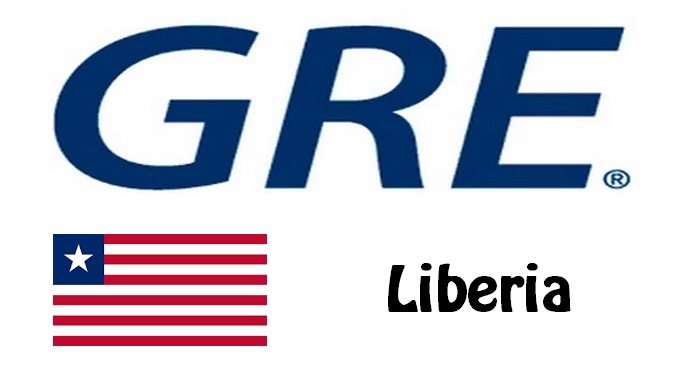GRE Testing Locations
Decided to take GRE exam? Now it is time to determine where to take the test. This site provides a full list of GRE testing centers in Liberia, among which, you can choose one that is nearest to you. Good news is that the following GRE test locations in Liberia offer both GRE general test and the GRE subject tests.
Paper-delivered Test Centers for General Test
| Code | Name |
| 10674 | Monrovia, Stella Maris Polytechnic |
GRE Test Dates
There are two types of test format offered by the test maker – ETS: Computer-delivered and Paper-delivered GRE general tests. For computer based test format, the GRE General Test is offered year-round on a continuous basis, and available for registration on a first-come, first-served basis. For paper based general test, testing is available three times per year. The following test dates apply:
| Test Dates for Paper Based | Deadlines for Registration | Scores Available |
|---|---|---|
| November 09, 2019 | October 4, 2019 | December 20, 2019 |
| February 1, 2020 | December 27, 2019 | March 13, 2020 |
GRE Subject Tests in Liberia
The GRE Subject Tests are available on paper based only. In all GRE test centers throughout the world (both inside and outside United States), the exam is available three times a year. The three test dates are:
- April
- September
- October

More about Liberia
Business
The mining of iron ore and the extraction of rubber formed the economic basis of Liberia until the 1980s. The economy was characterized by the duality between a modern sector, dominated by foreign, export-oriented companies, and a traditional agricultural sector with low productivity and predominantly geared towards self-sufficiency. Years of civil war brought the country’s formal economic activities to a virtual standstill and replaced it with an informal war economy, characterized by the overexploitation of natural resources, especially tropical timber and diamonds.
The reconstruction of the badly damaged economy and infrastructure (roads, electricity and water supply, telephone) is only progressing slowly, mainly because of the lack of capital and skilled workers. The outbreak of the Ebola virus disease also paralyzed economic development and led to a decline in gross domestic product (GDP) by (2016) 1.6%. The gross national income (GNI) per resident is (2017) only US $ 380 per resident. Over half of the population lives below the poverty line. In 2010, the country was canceled by the international community in the amount of US $ 4.6 billion in debt to support the measures initiated to combat poverty and stabilize the economy.
Foreign trade: The foreign trade balance is very negative (import value 2016: US $ 1,053 million; export value: US $ 263 million). The main export products are rubber, iron ore, gold, diamonds, cocoa, coffee and wood. The main imports are fuels, foodstuffs, machines and transport equipment. The most important trading partners include Singapore, Japan, South Korea, China and the USA.
Agriculture
Agriculture forms the livelihood of a large part of the population and employs around 60% of the workforce, but only (2016) contributes 34.2% to gross value added. Smallholder production for personal use is predominant; however, large quantities of food have to be imported to supply the population. The main crops are plantains, cassava, yams and, in the coastal plain, rice, the staple food; coffee, cocoa, palm kernels and peanuts are mainly cultivated for export. Because of the widespread tsetse fly, livestock farming is only possible to a limited extent.
Forestry: Around 44% of the land area is covered by forest. The most important branch of forestry is rubber production, which began in 1926. The Bridgestone / Firestone plantation near Harbel is one of the world’s largest rubber plantations. Production largely came to a standstill during the civil war, but quickly recovered. Most of the logging (2014: 8.6 million m 3) is used as firewood. The export of industrially felled tropical timber increased again after the lifting of the export sanctions (2009).
Fishing: Fishing is carried out on the coast as well as in the rivers, lagoons and creeks. Most of the catch is used to cover domestic needs, only a small part is exported.
Natural resources
Liberia is a country rich in natural resources. The mining of iron ore was the most important sector of the economy until 1989, but was completely stopped during the civil war. In 1987 Liberia was the second largest iron ore producer in Africa. The most important mining sites are in the Nimbabergen and on the Mano River. Gold and diamonds are mined in the Nimbabergen and on the Lofa River. Liberia still has reserves of bauxite, lead, copper, manganese, nickel, zinc, tin, uranium and others. Crude oil deposits have been discovered off the coast of Liberia, the economic feasibility of which has yet to be examined.
Industry
Industry (mainly concentrated in Monrovia) is only poorly developed; its share of the overall economy, including mining and construction, is 13.0% of GDP (2016). The predominantly small-scale factories are limited to food and rubber processing.

